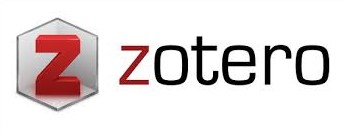KETIKA INFLASI DAN KETIDAKPASTIAN MENEKAN: REFLEKSI DOOM SPENDING DAN PENTINGNYA LITERASI EKONOMI
DOI:
https://doi.org/10.54199/pjeb.v5i2.589Keywords:
doom spending, economic literacy, macroeconomic pressure, consumer behavior, literature reviewAbstract
The phenomenon of doom spending, or impulsive consumption behavior as an emotional escape, has become increasingly prevalent amid global economic uncertainty. Economic crises, high inflation, and job insecurity are key drivers of irrational consumer behavior. This study aims to systematically review the literature examining the relationship between macroeconomic pressures, doom spending behavior, and the role of economic literacy as a mitigation tool. Using a systematic literature review approach, this research analyzes scholarly articles published between 2018 and 2025 from reputable sources. The findings indicate that macroeconomic pressure significantly contributes to doom spending behavior, and economic literacy plays an essential role in shaping rational consumer decision-making. However, economic literacy alone is insufficient without self-regulation and digital awareness of consumerist influences. This study highlights the urgency of enhancing economic literacy programs that are adaptive to digital challenges and macroeconomic dynamics.
Keywords: doom spending, economic literacy, macroeconomic pressure, consumer behavior, literature review
References
Ajzen, I. The Theory of Planned Behavior. Organizational Behavior and Human Decision Processes, 50, 179–211 (1991).
Atkinson, A. & Messy, F. A. Measuring Financial Literacy: Results of the OECD / International Network on Financial Education (INFE) Pilot Study. OECD Working Papers on Finance, Insurance and Private Pensions, 15, 1–73 (2012).
Conger, R. D. et al. Economic Stress, Coercive Family Process, and Developmental Problems of Adolescents. Child Development, 65, 541–561 (1994).
Tan, L. Doom Spending: Short-Term Gratification or Long-Term Pain? NAV by DBS. Diakses dari https://www.dbs.com.sg/personal/articles/nav/budget-spend/doom-spending (2024).
Gupta, L., Kaur, R. & Walia, A. Economic Education and Household Financial Outcomes during the Financial Crisis. Journal of Risk and Financial Management, 14, 316 (2022).
Husnayetti, H., Hapsari, T. & Fadhilah, N. Doom Spending Behaviour Among the Digital Generation: The Role of Financial Literacy and Social Media Interaction. Zenodo, https://zenodo.org/records/15703129 (2025).
Kahneman, D. Thinking, Fast and Slow. New York: Farrar, Straus and Giroux (2011).
Lusardi, A. & Mitchell, O. S. The Economic Importance of Financial Literacy: Theory and Evidence. Journal of Economic Literature, 52, 5–44 (2014).
Maulidina, N. & Kurniawati, H. The Effect of E-Money, Economic Literacy and Parents’ Income on Consumptive Behavior. Economic Education Analysis Journal, 11, 74–83 (2022).
OECD. OECD/INFE 2020 International Survey of Adult Financial Literacy. Diakses dari https://www.oecd.org/financial/education/oecd-infe-2020-international-survey-of-adult-financial-literacy.pdf (2020).
Remund, D. L. Financial Literacy Explicated: The Case for a Clearer Definition in an Increasingly Complex Economy. The Journal of Consumer Affairs, 44, 276–295 (2010).
Schiffman, L. G. & Kanuk, L. L. Consumer Behavior. New Jersey: Prentice Hall, 9th Edition (2007).
Sütterlin, B., Brunner, T. A. & Opwis, K. Emotion Regulation and Impulsive Buying: When the Brain Wins Over the Mind. Applied Psychology, 60, 361–379 (2011).
Zhou, M. & Pham, M. T. Promotion and Prevention Across Mental Accounts: When Financial Products Dictate Consumers’ Investment Goals. Journal of Consumer Research, 31, 125–135 (2004).
Downloads
Published
How to Cite
Issue
Section
License
Copyright (c) 2025 Shella Rizqi Amelia, Lik Anah, Widadatul Ulya

This work is licensed under a Creative Commons Attribution-NonCommercial-NoDerivatives 4.0 International License.























